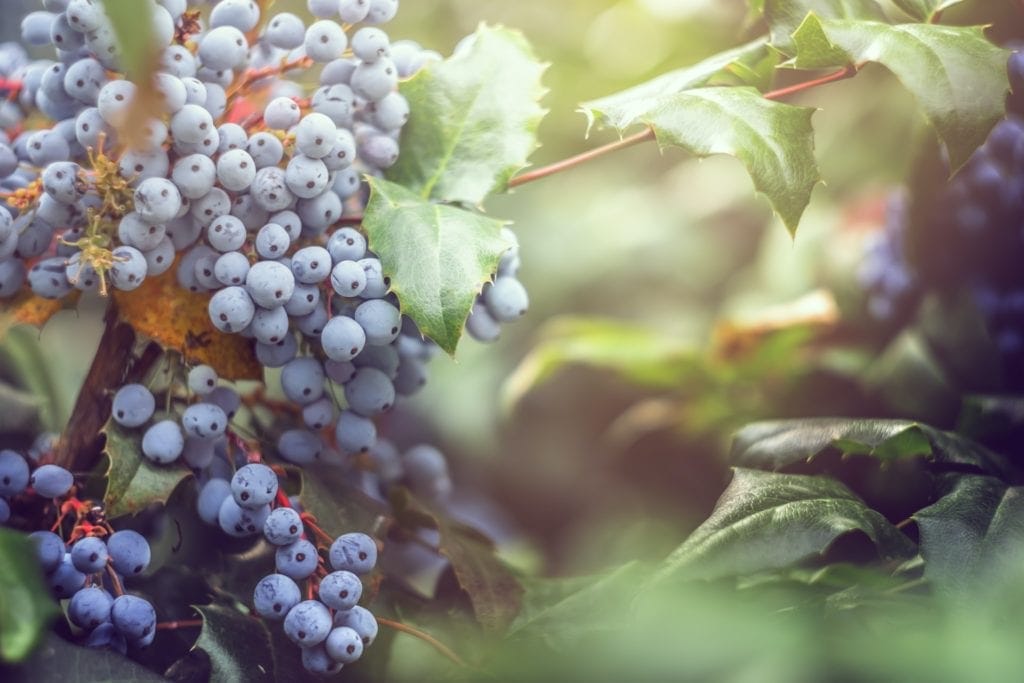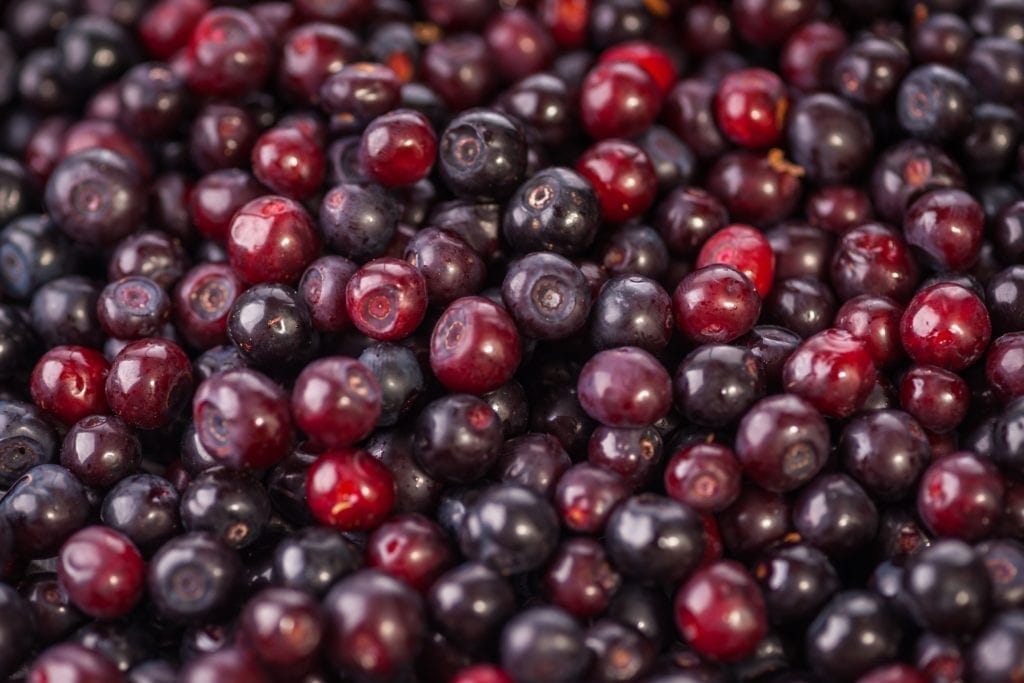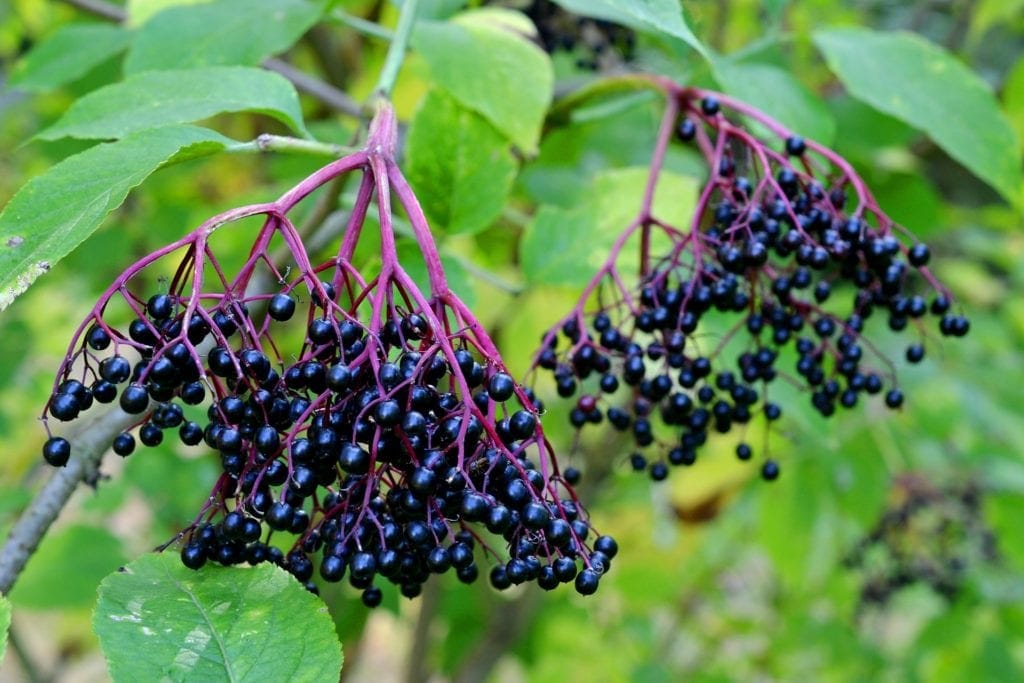For some, spring means releasing home-raised butterflies, watching young deer sport their budding antlers, or experiencing the symphony of riverside hatches and frog songs. For others still, it means an opportunity for natural forage and taking advantage of the bounty of the land. In comes berry picking!
The hunt for colorful wild berries makes for an excellent wilderness treasure hunt with rewards as delicious as nutritious. Many berries make a sweet little trail snack, others are often picked for use in preserves, pies, and wines. However, an honest trail mix-up can prove deadly to the uninitiated in berry identification.
Today we will look at a few North American berry varieties and take a moment to review some recommendations for safe berry picking, foraging, and consumption.

Oregon Grapes
Oregon grapes were first pointed out to me on a bountiful trail toward a favorite fishing hole. Through mouthfuls of wild raspberries, I was eager to try this new trail snack, expecting a smaller, sweeter variety of grapes. However, I spat it out almost as quickly as it reached my mouth. This tart, wild fruit contrasted heavily with the lingering sweetness of the raspberry, and to my surprise tasted almost bitter by comparison. However, Oregon grapes (although not truly a grape at all, but rather a type of barberry bush) have many positive qualities and uses. While sharp-tasting, these juniper berry lookalikes are edible and do best in recipes with sugar, such as pies, jams, or wines. The root and bark of this plant are also used to make medicines that are effective in treating stomach ulcers, infections, and psoriasis.

Huckleberries
While it could be argued that the backbone of tourism in many mountain towns is the scenery itself, make no mistake it finds its support behind the scenes by the huckleberry plant. Because huckleberry thrives in acidic and inhospitable soils well above sea level, attempts at the domestic growth of huckleberries tend to either fail completely or offer yields and flavors that pale in comparison to their wild counterparts.
Found throughout North America along both coasts, huckleberry foraging is a unique pastime in subalpine regions during the short peak season of the late summer months. Huckleberries are prized by hopeful berry pickers for their mouthwatering flavor, versatile recipe options, elusive nature, and medicinal properties. As one of the richest natural sources of anthocyanins, powerful antioxidants absorbed through fresh huckleberries begin to work for the good of various organs within an hour of consumption.
Huckleberries have been shown to reduce inflammation, protect cells from free radicals, aid brain function, and promote cardiovascular health. Although they look similar to blueberries, huckleberries tend to be smaller in size with a more intense sweet flavor and can be substituted into virtually any recipe calling for berries. Wild huckleberry jams, chocolates, milkshakes, cheesecakes, and even vinaigrettes are a staple in berry-rich regions such as the Flathead Valley near Glacier National Park.

Elderberries
While long valued by those in homeopathic circles as an effective cold and flu remedy, elderberry is often overlooked by many casual berry pickers, as the raw berries are often too tart for trailside consumption. However, once dried in the sun these berries lose their bitterness and store quite well. These widespread, easily-grown berries are boiled to make syrups, preserves, pie fillings, and wine. Early in the season, many choose to forage for Elderflowers when the blooms are just beginning to open for use in apothecary teas and fried treats, such as fritters or beignets.
It is important to note that despite the positive qualities of the ripe berry, unripe elderberries, as well as their leaves and stems, are not fit for human consumption, and only the black/purple varieties should be pursued. There are a wide variety of plants in the Elderberry family and it is best to familiarize yourself with local varieties before seeking them out.
Always be cautious when berry foraging and ensure you are familiar with local varieties before consumption. Many commonly encountered berries, such as Yew, Virginia Creeper, and American Bittersweet are toxic and should not be ingested.
When trying to determine a berry’s edibility, survivalist and former Green Beret Mykel Hawke, leaves us with this helpful rhyme:
White and yellow, kill a fellow.
Purple and blue, good for you.
Red could be good, could be dead.
It should also be noted to always avoid any berries from plants with milky saps or an almond-like scent, as this is a characteristic of cyanide compounds.
Never eat any berries you cannot positively identify, and remember that animals feeding on a certain plant is not a reliable indicator for safe human consumption. Pick wisely and remember that even armed with Hawke’s handy mnemonic and lists of qualities to avoid, a handful of berries is simply not worth risking your life.
Tips for Berry Picking
Choose the right time to go berry picking.
The best time to go berry picking is when the berries are ripe and ready to be picked. This varies depending on the type of berry and your location. Check with local farms or online resources to find out the best time to go berry picking in your area.
Dress appropriately.
Wear comfortable clothes and shoes that you don't mind getting dirty. Long sleeves and pants can protect you from scratches and insect bites. Don't forget to bring a hat and sunscreen to protect yourself from the sun.
Bring the right tools.
Bring a container to hold your berries, such as a basket or a bucket. You may also want to bring gloves to protect your hands from thorns and prickly bushes. Scissors or clippers can be useful for cutting the stems of the berries.
Look for the best berries.
When picking berries, look for ones that are plump, firm, and brightly colored. Avoid berries that are mushy, moldy, or discolored. Be gentle when picking the berries to avoid damaging them.
Follow the rules.
If you are picking berries at a farm or a designated area, make sure to follow the rules and regulations. Some places may have restrictions on how many berries you can pick or where you can pick them.
Clean your berries.
Once you have picked your berries, make sure to clean them thoroughly before eating or storing them. Rinse them in cold water and remove any stems or leaves. You can also store them in the refrigerator or freezer for later use.
Enjoy your berries.
Berries are a delicious and nutritious treat to be enjoyed in many ways. Eat them fresh, make them into jams or pies, or add them to smoothies and salads. Whatever you do, savor the sweet taste of your freshly picked berries!
What month is best for berry picking?
Answer: The best time for berry picking varies depending on the type of berry and your location. Generally, strawberries are best in June, blueberries in July and August, and raspberries and blackberries in August and September. It's always best to check with local farms or orchards for the most accurate information.
Through responsible berry picking and foraging – and educated consumption – you too can take advantage of the fruits of God’s great grocery store.
This website is for information purposes only. The information contained in this post is not meant to diagnose, treat, cure, mitigate, prevent, or provide medical advice. Consult with a healthcare provider if you are experiencing any symptoms. When foraging for plants, do so ethically and be accompanied by an expert. Always confirm plant identification before using or consuming any herbs or berries.
